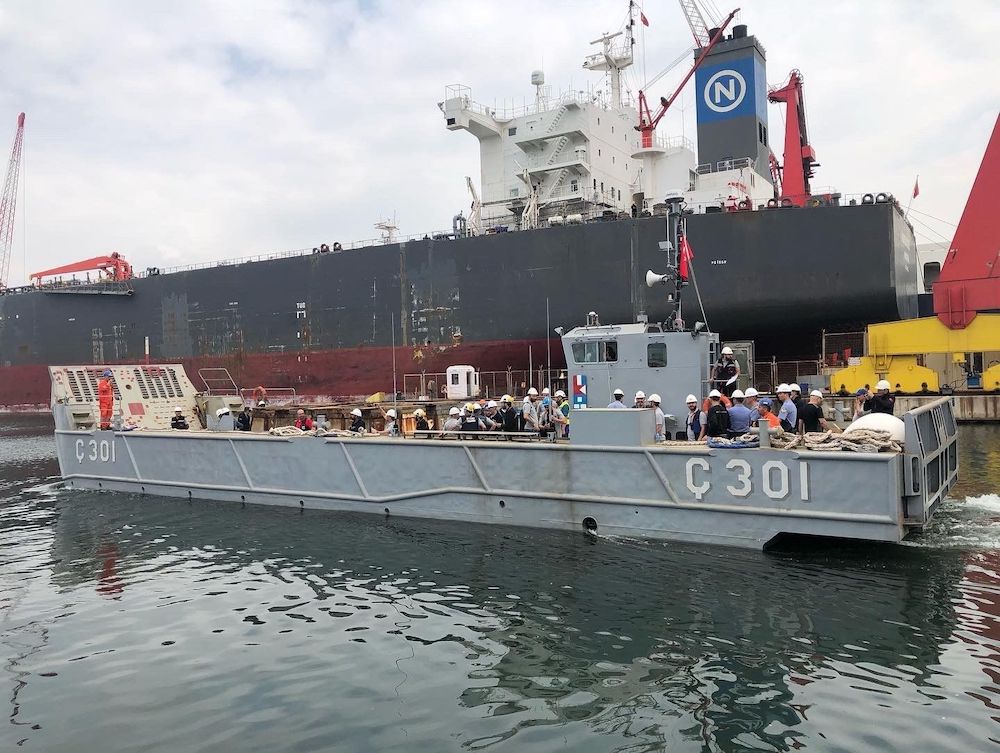The rise of the Turkish defense industry is attracting the attention of many international players, among whom Navantia stands out for its bold approach and large-scale projects. Through an exclusive interview, we explore the prospects for collaboration between this Spanish shipbuilding company and the defense sector in Turkey. As Turkey strengthens its position on the global stage, an alliance with foreign companies like Navantia could represent a strategic opportunity for both parties.
By examining past initiatives as well as future projects being considered, this interview highlights not only the economic stakes but also the geopolitical conveniences that underpin this collaboration. The commercial director of Navantia emphasizes a mutual commitment, paving the way for new perspectives, particularly in the field of naval construction. These alliances could redefine the industrial landscape of defense, and cooperation between the two industries seems promising. This bilateral dialogue is all the more relevant given that security challenges require swift and effective responses, now more interconnected than ever.

The collaboration between Navantia and the Turkish defense industry represents a strategic opportunity that transcends mere commercial interests. With the rise of the Turkish defense industry, it is essential to explore the implications of this cooperation on the European defense landscape, as well as on the operational capabilities of both partners. This partnership is not limited to an economic view: it encompasses dimensions of innovation, technology, and military synergies, making this dynamic particularly fascinating.
Table des matières
ToggleThe foundations of cooperation: a strengthened strategic partnership
Navantia, a Spanish shipbuilding company, has considerable expertise in the defense sector, particularly in the manufacture of military vessels. Turkey, for its part, is rapidly expanding in this area, with significant investments in modernizing its military capabilities. According to the latest statistics, the Turkish defense industry has experienced a growth of 25% over the last five years, reaching nearly 10 billion dollars in exports in 2022. This upward trend creates fertile ground for enriching collaborations.
The partnership between Navantia and Turkish companies has intensified particularly with tangent projects such as the development of corvettes and frigates incorporating advanced technologies. A notable project in this collaboration is the construction program of the Istanbul warship, aimed at establishing a model of technological integration between the two nations. Preliminary discussions, which are set to take place shortly, aim to establish a concrete framework for this cooperation, thereby becoming the cornerstone of a stronger bilateral relationship.
Mutual benefits: towards technological synergy
The benefits of this collaboration are not limited to a simple transfer of technology; they also create opportunities for innovation and training. For example, by integrating automation and artificial intelligence solutions developed by Navantia into Turkish naval systems, both parties can benefit from greater operational efficiency. The experiences drawn from previous projects, such as the F-110 frigate, demonstrate the importance of technological updates in optimizing the performance of military vessels.
One of the most innovative aspects of this cooperation lies in the possibility of sharing data and analytics to better anticipate market needs. By relying on advanced analytics tools and data platforms, Navantia and the Turkish defense industry will be able to adjust their production strategies to effectively meet the specific needs of armed forces. This data-driven approach will enhance engineering capabilities while minimizing development time.
Practical examples of collaboration: case studies and recommendations
A concrete example of a model collaboration is the project for constructing the amphibious vehicle AAV in cooperation with Turkish shipyards. This project, which has allowed Turkish engineers to gain valuable experience in advanced ship design, is a perfect example of skill integration. By observing these types of synergies, other European defense companies can draw inspiration from this dynamic.
To maximize the benefits of this collaboration, it is advisable for both parties to implement regular co-design workshops. These meetings would allow for joint exploration of innovations and foster the emergence of concrete proposals. Furthermore, it would be wise to encourage cross-training between the Spanish and Turkish teams, thus promoting an exchange of skills and knowledge that would elevate the standards of the defense industry in each nation.
In a context of increasing geopolitical tensions, this cooperation could also act as a stabilizing factor in the region. By converging their efforts, Navantia and the Turkish defense sector can play a leading role in establishing a strong regional ecosystem, based on industrial cooperation and continuous innovation.
In conclusion, it is essential to emphasize that the potentials of such collaboration are just beginning to unfold a promising chapter. With targeted investments and perfectly aligned skills, Navantia and the Turkish defense industry can transform their relationship into a shining example of success in the defense field. Concrete initiatives should be encouraged to achieve this common vision, thus paving the way for significant advancements in national security, to the benefit of both partners.






